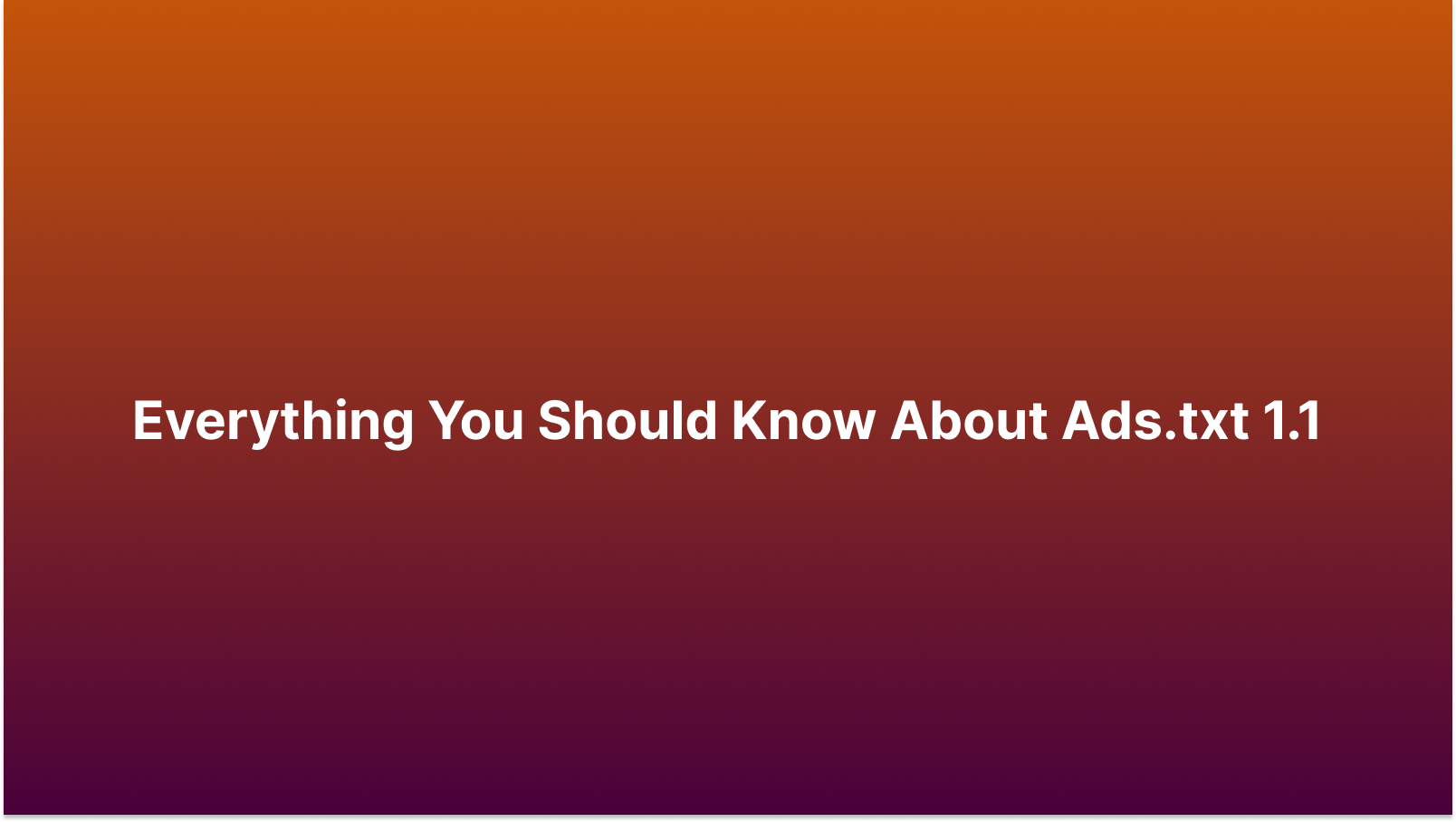Everything You Should Know About Ads.txt 1.1
Transfon Team
What’s Ads.txt, and Why Should You Care?
Ads.txt (Authorized Digital Sellers) is like a guest list for your website’s ad inventory—it tells advertisers who’s legit and who’s not. The IAB Tech Lab launched it in 2017 to fight domain spoofing and bring some much-needed transparency to programmatic advertising. Since then, it’s been a game-changer, giving publishers control over who can sell their ad space.
 Everything You Should Know About Ads.txt 1.1
Everything You Should Know About Ads.txt 1.1
A Quick Look at Ads.txt Versions
Ads.txt 1.0.2 (2019)
This version added a small but crucial detail: publishers could use a placeholder if they didn’t authorize any sellers.
Example:
placeholder.example.com, placeholder, DIRECT, placeholder
That way, there was no confusion—no sellers meant no ads.
Ads.txt 1.0.3 (2021)
This update introduced inventorypartnerdomain, a handy directive for mapping inventory-sharing relationships, especially useful for Connected TV (CTV) and Over-the-Top (OTT) platforms.
Ads.txt 1.1 (2022)
Then came Ads.txt 1.1, released in August 2022. This version tackled two major challenges: verifying ownership and clarifying who manages a publisher’s inventory.
What’s New in Ads.txt 1.1?
1. Owner Domain (ownerdomain)
Before this update, figuring out who actually owned a website was tricky. Some entities operated both owned and represented properties, making it tough to separate the two. That’s where ownerdomain comes in.
What Is It?
ownerdomain tells buyers exactly who owns the site.
Example:
ownerdomain=yourdomain.com
Each Ads.txt file should have just one ownerdomain, matching the seller.domain field in Sellers.json. This clears up ownership and cuts down on fraud.
2. Manager Domain (managerdomain)
Another issue? Small and mid-sized publishers often work with ad managers or sales companies. Before Ads.txt 1.1, buyers couldn’t easily tell if they were dealing directly with the publisher or through an intermediary. Enter managerdomain.
What Is It?
managerdomain identifies the company that manages a publisher’s inventory.
Example:
managerdomain=yourdomain.com
If multiple companies manage different regions, you can specify them:
managerdomain=company1.com, US
managerdomain=company2.com, UK
This makes it clearer for buyers looking for the most direct path to inventory.
How to Implement Ads.txt 1.1
Updating to Ads.txt 1.1 is simple:
- Add the
ownerdomainfield to your Ads.txt file. - If you work with a managing entity, include the
managerdomainfield. - Double-check that all authorized sellers are correctly listed.
- Keep your Ads.txt file updated—things change, and so should your file.
- Validate your entries using tools like the IAB Tech Lab’s Ads.txt Validator.
How Ads.txt Works (In a Nutshell)
- Publishers create an Ads.txt file and upload it to their root domain (
yourdomain.com/ads.txt). - Advertisers and DSPs crawl the Ads.txt file to verify which sellers are authorized.
- Ad exchanges cross-check seller details with Sellers.json.
- Unauthorized sellers get blocked, reducing fraud and misrepresentation.
- Programmatic buyers trust the data, ensuring they bid on genuine inventory.
Why Publishers Should Update to Ads.txt 1.1
Upgrading to Ads.txt 1.1 gives publishers more control over their inventory and strengthens transparency. It helps:
- Reduce unauthorized resellers.
- Ensure ad buyers know who really owns and manages an inventory.
- Improve the overall health of the programmatic advertising ecosystem.
Final Thoughts
Ads.txt 1.1 is a significant step forward in making programmatic advertising more transparent and secure. By adding ownerdomain and managerdomain, it gives publishers more control over their inventory and helps buyers navigate an increasingly complex landscape.
If you’re a publisher, now’s the time to update your Ads.txt file in the ads.txt manager. It’s a small change with a big impact, ensuring your inventory is protected and properly represented in the ad marketplace.